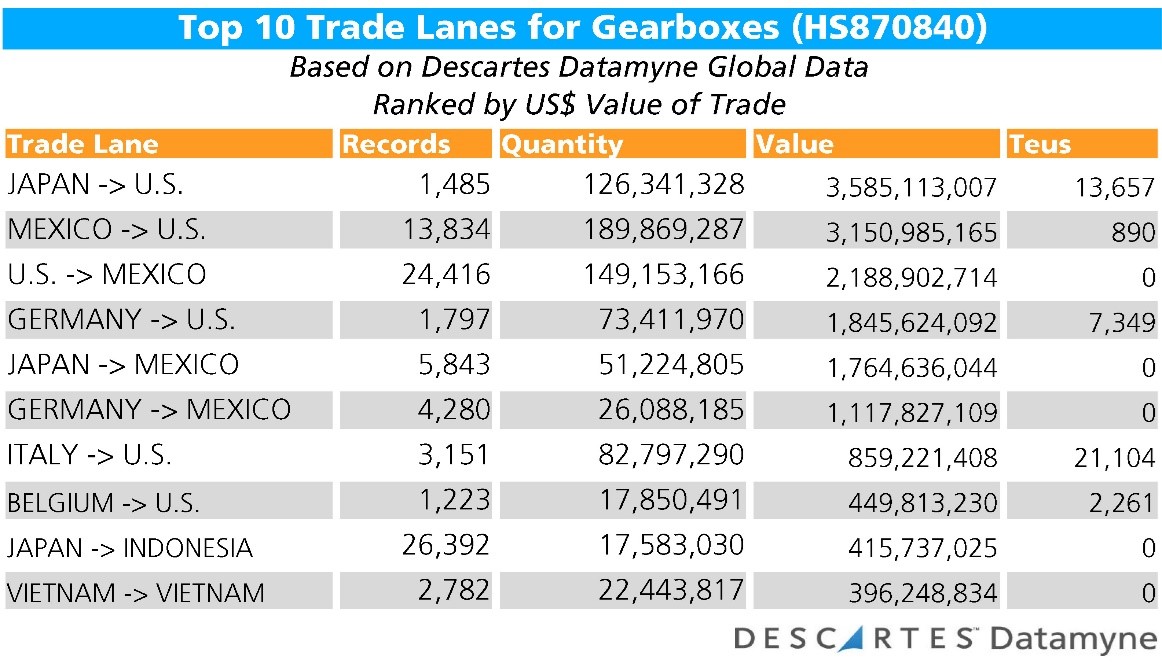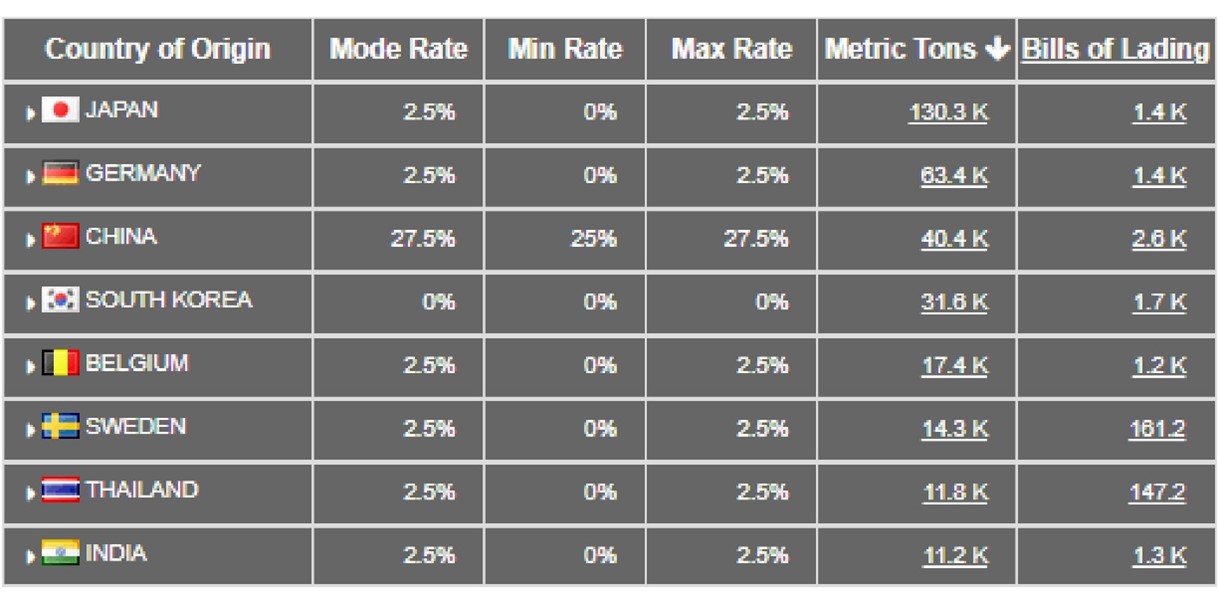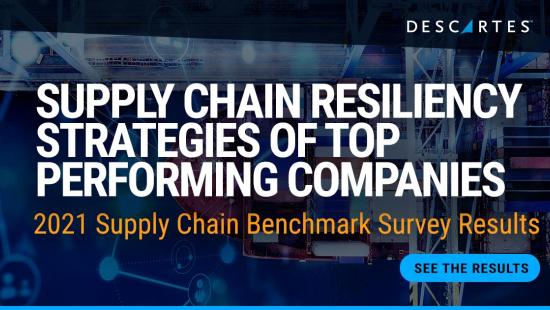The Descartes Datamyne 2021 benchmark survey of companies impacted by the shipping crisis indicates that the top performing companies – as measured by current and projected growth – are also major investors in technologies that automate processes and enhance trade intelligence for optimizing supply chain efficiency, responsiveness and resilience.
The Covid-19 pandemic has played havoc with trade flows while driving up demand for trade goods, dealing a double blow to global supply chains. The system for moving those products through assembly to delivery has been under unprecedented stress for months, and its weak spots have been laid bare, as Descartes CEO Ed Ryan succinctly explains. Once a low-profile, back-office operation, logistics now commands the attention not only of front-line business strategists, but of the media and, especially, government policy makers.
Well-publicized fears that the holiday season’s most-wanted toys would be in short supply helped change spending patterns, pushing consumers to shop early. Now, the supply chain crisis is in the spotlight as a key contributor to inflation.
Shortages in microprocessors, pharmaceuticals, and electric vehicle components prompted the Biden Administration to direct executive agency review of supply chains deemed vital to national security. The resulting report, Building Resilient Supply Chains, Revitalizing American Manufacturing, and Fostering Broad-based Growth, recommends an expanded role for government in providing material support for building domestic production capabilities, leveling the international playing field by incentivizing top line business practices and strengthening trade rules and enforcement, leveraging the government’s purchasing power, and setting up systems to monitor and address supply chain disruptions.
The top destination for the world’s exports, the U.S. is also directing funds to expand and upgrade port facilities and multimodal transport infrastructure. Last month (December 23), the U.S. Department of Transportation announced the award of more than $241 million for 25 port improvement projects in 19 states and one territory through the Maritime Administration’s Port Infrastructure Development Program (PIPD). Now entering its third year, the PIPD distributed $492 million in funding for 32 projects in its first two years.
This is just the warm-up. The administration’s action plan for America’s ports and waterways outlines the priorities for investing in supply chain transport’s share of the $1.2 trillion in funds authorized by the Infrastructure and Jobs Act.
High-growth companies prioritize automation and commercial intelligence
Globalized supply chains will be reshaped by post-pandemic government investment and intervention, along with such traditional disrupters of trade flows as geopolitics and natural disasters, but they are not going away, nor will they cede significant share to “reshored” domestic production in the near future.
The average consumer product contains components from 10 different countries and that’s not likely to change any time soon, as Jeremy Nixon, CEO of Ocean Network Express points out in a Financial Times report that also notes U.S. corporations spent more than twice as much on transport as on inventory in 2020.
The lesson of the pandemic has been the extent to which the global economy has been built on decades of decline in the cost of moving goods from producers to consumers. The pandemic exposed the fragility of fragmented supply chains and the risks of concentrating production in just a few geographic areas. Now the shipping capacity crunch has sent transport costs skyrocketing.
For companies bringing products to global markets in the post-pandemic era, the competition will center on the added-value, reliability, and resilience of supply chains. As the results the Descartes benchmark survey, Supply Chain Resiliency Strategies of Top Performing Companies, indicate, competitive strategies that achieve results are high-tech approaches to time-honored logistics best practices, including comparative cost analyses, automated processes, end-to-end visibility of supply chains in operation, and a ready set of vetted alternatives for sourcing, transporting or warehousing, and routing. The survey covered providers and consumers of transport and logistics services.
The majority (57%) of the Descartes survey respondents favored investments in technology to prepare for the future (versus, e.g., riding out the current storm or restructuring), with a clear correlation between prioritizing technology investments and reported business growth.
Two areas of investment topped the list of must-haves: automated processes for faster customer response and enhanced global trade intelligence for identifying potential suppliers, customers, markets, and trade lanes. Trade content tools, such as Harmonized Tariff System classifiers and landed-cost calculators also polled well.
When trade flows are interrupted, leverage data streams
From the Descartes perspective, the survey’s high-tech adopters are well-positioned to capitalize on the ongoing convergence of multiple trade data streams – from companies’ automated interfaces with customers to shipping manifests and Customs import records. Consider Descartes Datamyne Global Data, which draws on U.S. Census data, U.S. bill of lading import and export data, and our portfolio of international databases. A company researching supply chain options for gearboxes (HS870840), a top product in global trade in automotive parts and, increasingly, wind turbine power generators, could quickly identify active trade lanes. Here are 2021’s top 10, ranked by value of trade:

From here, it’s a matter of a few clicks to put together a list of trade lanes less traveled that may lead to alternate sources or potential detours around supply chain disruptions. Or review suppliers – or buyers – by country, an exercise that reveals a good deal of related-party trading, but also independent producers and contract manufacturers.
Drill further down to shipping records – for example, the bills of lading covering U.S. waterborne imports – to identify locales that support production or distribution clusters, an indicator that transportation and warehousing infrastructure suitable to the product in question is available. A search of India’s suppliers of gearboxes in the India -> U.S. trade lane (ranked 18th by quantity of trade, 25th by value) led to a closer look at Sriperumbudur, a suburb of the port city of Chennai, designated a special economic zone in 2008, and currently a magnet for investment by automotive and electronics companies as well as government funding for a transport infrastructure. Additional online tools identify trade good by NAICS codes (which provided an estimate of the U.S. imported gearboxes bound for the automotive section versus the nascent wind power industry), dashboard profiles of buying and selling companies, company contacts filtered by job title, and Duties look-up that yielded a table of results by COO for U.S. imports of HS870840, partially sampled here:

These tools and more provide the trade intelligence needed to design, build, and operate resilient supply chains. Combined with proprietary data (as many Descartes clients do), trade data equips logistics strategists to outmaneuver the disruptions, capacity crunches, and the high transports costs that look likely to be a feature of the post-pandemic global market – as well as the competition.
How Organizations Can Handle Supply Chain Disruptions
The global supply chain congestion is a challenging issue affecting international companies looking for ways on how to handle supply chain disruptions and shipping delays. Descartes Datamyne provides in-depth business intelligence with comprehensive, accurate, up-to-date, global trade data and information that helps organizations efficiently address shipping delays and enhance supply chain resiliency in the short and long terms.
Our business intelligence saves organizations significant time in accessing in-depth market insights and identifying new suppliers, trade lanes, markets, and customers.
Datamyne’s multinational trade data assets covering 230 markets around the world, including China, Latin America and the EU.
Additional Resources



